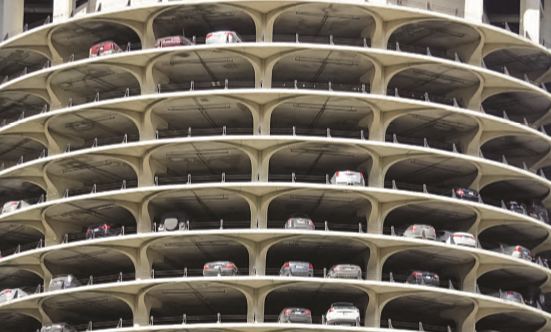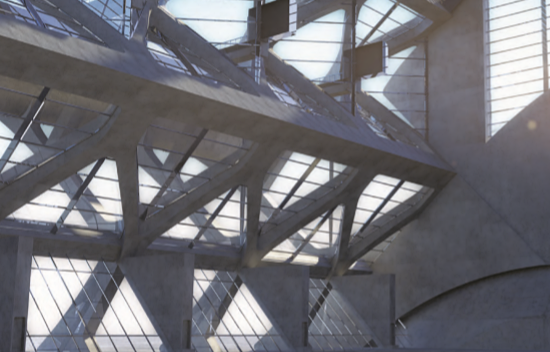Back in 1943, NACE International was established in Houston, Texas, USA by 11 engineers focused on cathodic protection (CP) to address metal pipeline degradation. Now 36,000+ members strong, NACE has evolved into a worldwide organization that is involved in every industry and area of corrosion prevention and control. This year, NACE has been celebrating its 75th anniversary, a milestone made possible by the knowledge, expertise, and continued support of its members from around the globe. After honoring NACE’s history over the last year with classic MP articles from the past, guest editorials from NACE Past Presidents and Fellows, content about NACE’s evolution across all activities, and more, our latest issue is dedicated to the future of corrosion control as seen by experts in the field. In this roundtable special, panelists share their predictions on where the corrosion industry is going in the next 25 years and beyond.
For Part 2 of this series, the featured panelist is Fred Goodwin, head of BASF Construction Chemicals Global Corrosion Competency Center.
Fred Goodwin
I work with concrete, so most of my comments apply to the corrosion of reinforcing steel in concrete. Concrete is claimed to be the second most common man-made material (after potable water), with about 1 cubic yard produced for every person on the planet per year, resulting in more than twice as much concrete being used than the entire quantity of steel, aluminum, glass, plastic, and wood. Much of this concrete is reinforced with steel to improve its tensile properties. Thermodynamically, steel is going to corrode at some point, but the high alkalinity of the concrete embedment passivates the steel from corrosion until either the pH falls below about 9, deleterious ions ingress into concrete (such as chlorides), or the electrical potential of the steel is influenced such as from stray current leakage. Corrosion of reinforcing steel in concrete is considered to be the primary cause of concrete deterioration. Two universal rules of concrete construction are that concrete cracks and steel rusts.
Increased Use of Monitoring Technology
As technology improves and infrastructure deteriorates, monitoring of factors related to corrosion will increase. The objective of monitoring should change from monitoring of the initiation time of corrosion or the rate of corrosion propagation to indications of when preventative maintenance should occur. In other words, monitoring will be used to indicate when protective actions should occur for the greatest effect on the life cycle cost of the structure. Monitoring systems will evolve to be durable for the long life of concrete and be wirelessly connected without requiring external power (such as through radio frequency identification [RFID] technology) and to also be less consuming of power as battery technology improves.
Increased Usage of Robotic Inspection
Investigation of corrosion is time consuming and often involves difficult location access, which is costly and potentially hazardous. Drones are already in common use for improved visual inspection as they can locate a camera in areas that would otherwise only be accessible with scaffolding or rope work. Experimentation with drones using contact sensors is beginning where the positioning of the drone will allow contact of a probe to the concrete surface such as for crack identification, resistivity testing, or reinforcing steel location (pachometer or ground-penetrating radar). Positioning and control will continue to improve and allow better and longer access, with eventual development of additional monitoring technologies such as open circuit potential, or even linear polarization resistance. Further development of drone technology will allow improved underwater inspection through miniaturization, perhaps small robots that can crawl to provide up-close inspections.

Preventative and Proactive Maintenance
It has been stated that the most successful concrete repair is the one that is never done. Studies of concrete repairs indicate that the durability of the repairs is usually less than the durability of the remaining structure. This is caused by dissimilarities of the repair material to the host concrete (such as restrained shrinkage occurring in the fresh repair material bonded to concrete that has long ago stopped shrinking, resulting in cracking and disbondment), failure to address the repair holistically (repairing only locally visible damage rather than addressing the causes of deterioration in the entire structure), and deferring repairs until corrosion damage becomes visible. When one purchases an automobile, it comes with a manual that includes scheduled maintenance to extend the vehicle service life. If one ignores changing the oil, then in a few years one will replace the engine. On the other hand, if one were to change the oil every 1,000 miles (1,609 km), the service life will be greatly extended but the maintenance cost will also be quite high. For a concrete structure a maintenance plan needs to be developed and implemented to determine the “sweet spot” for concrete maintenance to maximize the service life and minimize the maintenance cost, just like the car service manual does for the vehicle owner. Since each structure is different, the maintenance plan will need to be customized and the inherent value of the plan communicated to the owner.
Service Life Analysis, Life Cycle Costing, and Asset Management
ACI 365.1R1 describes three types of service life: Technical, Functional, and Economic. Technical service life is the time in service until a defined unacceptable state is reached, such as spalling of concrete, unacceptable safety level, or failure of elements. Examples of the technical end of service life include (a) structural safety is unacceptable due to material degradation or exceeding the design load-carrying capacity, (b) severe material degradation, such as extensive corrosion of steel reinforcement, and (c) excessive deflection under service load due to decreased stiffness.
Functional service life is the time in service until the structure no longer fulfills the functional requirements or becomes obsolete due to change in functional requirements. Examples include (a) the need for increased clearance, higher axle and wheel loads, or road widening, (b) aesthetics become unacceptable—for example, excessive corrosion staining, and (c) functional capacity of the structure is no longer sufficient—for example, a football stadium with insufficient seating capacity.

Economic service life is the time in service until replacement of the structure or part of it is more economical than keeping it in service. Examples include (a) maintenance requirements exceed available resource limits, and (b) replacement to improve economic opportunities—for example, replacing an existing parking garage with a larger one due to increased demand.
If one is considering the service life of a concrete sidewalk, it is replaced when it becomes aesthetically unpleasing, uneven, or sufficiently rough to become a tripping hazard. If one is considering the service life of a concrete nuclear reactor containment vessel, the considerations for service life optimization become much more critical. Designing the concrete structures for optimum service life involve many factors such as the concrete quality, the service environment, the attention to detailing, and the protective systems employed. Consideration of the tradeoffs between initial cost, inspection, monitoring, maintenance, downtime, and decommissioning over the service life of the structure is one description of life cycle costing where having a higher initial cost with lower maintenance costs is compared to other alternatives. Asset management is consideration of the life cycle costs of the components of a system such as treatment and distribution of a municipal water system including the intake of raw water, treatment to make it potable, delivery to points of usage, and treatment of the waste water, all of which include many individual components of machinery, pipelines, etc. Service life analysis, life cycle costing, and asset management will continue to expand in complexity and usage to address corrosion-related issues.
Maintenance Incorporated into BIM
Building Information Modeling (BIM) is a process involving the generation and management of digital representations of physical and functional characteristics of construction and is rapidly being accepted as a tool for construction design, scheduling, procurement, and management. In BIM, a three-dimensional model is developed of the structure and construction sequence overlaid to avoid time conflicts (a fourth dimension) and optimize costs (a fifth dimension). BIM also covers spatial relationships, light analysis, geographic information, and the quantities and properties of building components (for example, manufacturers' details). A logical extension of BIM is to also include the asset management and deconstruction of the structure throughout the building’s service life. Combining all these properties into a model reduction of corrosion issues is a natural consequence, such as through improved detailing, better water management, and service life modeling.
Increased Use of Alternatives to Steel Concrete Reinforcement
The simple answer to addressing reinforcement corrosion issues in concrete is to replace steel with a less or noncorroding material. While alternative reinforcement is already available in the forms of stainless steel, galvanized steel, fiber reinforced polymer (FRP), or epoxy coated reinforcement, the cost is often much greater, the development of the reinforcement (load transfer) is different, or defects in the epoxy coating can accelerate corrosion propagation. Many technical advancements are ongoing with the use of synthetic fibers to create ductility in concrete by balancing the fiber elongation, bond, and tensile strength to that of the concrete binder commonly referred to as ECC (Engineered Cementitious Composite). With the proper balance of material properties, many very fine cracks occur that are held tightly together by the embedded fibers, resulting in an isotropic composite material. Many treatments are available for fine cracks such as elastomeric coatings, membranes, and hydrophobic sealers that can minimize the ingress of deleterious materials into the cracks. In addition, polymeric fibers can improve the fire resistance of concrete by melting to form escape channels for trapped water as it turns into steam. Conventional concrete is pretty good compared to other building materials at surviving floods, fires, hurricanes, tornados, tsunamis, and other natural disasters, except for earthquakes. ECC can greatly improve the survivability of concrete in seismic events due to the ductility and crack stitching effects of the specialized fibers. Concrete develops its physical properties over long time periods as cement hydration occurs, so another evolution of ECC will be balancing of the fiber properties to the concrete properties as the concrete matures (such as control of plastic and drying shrinkage). The advent of 3D printing with concrete will also likely require fibers, but if conventional reinforcing steel is used the consistency and quality of placement can be greatly enhanced through robotic placement, thereby reducing the corrosion risk.

New Corrosion Inhibitors
Corrosion inhibiting admixtures are added to concrete to increase the stability of the passivating layer on the reinforcing steel formed by the alkalinity of concrete. Current technologies include nitrites, amino alcohols, amine esters, and amine carboxylates and have been commercially available for several years. The development of concrete admixtures is a mixture of both art and science as many factors must be balanced to produce the required performance of the concrete. Research continues to develop new technologies and materials to reduce corrosion of reinforcing steel.
Geopolymer Embedment of ICCP Anodes in Concrete to Address Acidification
Cathodic protection (CP) is the only rehabilitation technique that has been proven to stop corrosion in salt-contaminated bridge decks regardless of the chloride content of the concrete according to the U.S. FHWA (Federal Highway Administration). Impressed current CP (ICCP) has been successfully used for many years to address corrosion issues in reinforced concrete but suffers from the deterioration of anode embedment materials due to the acid formed during operation of the system. Geopolymer materials are alternative inorganic binders that are resistant to acids and can have the appropriate physical characteristics for durability in concrete and tailored to the proper resistivity for satisfactory current distribution in ICCP. Research continues to develop appropriate formulations for this application.
New and Existing Infrastructure
The American Society of Civil Engineers Report Card estimates a U.S.$4.6 trillion investment is required over the next 10 years just to return our infrastructure to the quality it was in 1988, with a predicted U.S.$2.1 trillion funding gap compared to the estimated funding. In 1990, it was estimated that between U.S.$1 and U.S.$3 trillion is required to rehabilitate all the reinforced concrete structures suffering from distress. It is unlikely that this situation is improving. More than two miles (3.2 km) out of every five miles (8 km) of America’s urban interstates are congested. Traffic delays cost the country U.S.$160 billion in wasted time and fuel in 2014. One out of every five miles of highway pavement is in poor condition and our roads have a significant and increasing backlog of rehabilitation needs. Almost 40% of our bridges are 50 years or older, with 56,007 rated as structurally deficient in 2016, averaging 188 million trips across a structurally deficient bridge each day. The average age of the 90,580 dams in the country is 56 years with the number of high-hazard potential dams climbing to nearly 15,500 in 2016, with deficient high-hazard potential dams estimated at 2,170. Nearly 240 million Americans rely on the nation’s 14,748 treatment plants for wastewater sanitation, yet the U.S. Environmental Protection Agency (EPA) estimates that at least 23,000 to 75,000 sanitary sewer overflow events occur in the United States each year from the 800,000 miles (1.3 million km) of public sewers and 500,000 miles (0.8 million km) of private lateral sewers. There are an estimated 240,000 water main breaks per year in the United States, wasting over two trillion gallons (7.6 trillion liters) of treated drinking water according to the ASCE Report Card 2017.
Not only is our existing infrastructure in deteriorating condition, but the need for new infrastructure continues to grow both for developed and developing countries. In developed nations, reduction of traffic congestion, faster transportation networks, and the achievement of larger aspirations drive demand. In developing countries, as the standard of living improves so does the need for infrastructure. Since such a large quantity of infrastructure is constructed from concrete that is reinforced with conventional steel, corrosion will continue to be an issue. The existing infrastructure components such as bridges, buildings, airports, dams, piers, canals, etc. continue to deteriorate, requiring either replacement or more frequent and expensive repairs. Concrete construction and maintenance are growth areas with corrosion of reinforcement the primary driver of much of this growth.
This exclusive NACE International roundtable will conclude with commentary from additional panelists in the third and final part of the series, available in January.
Reference 1 ACI 365.14-00, “Service-Life Prediction—State-of-the-Art Report” (Farmington Hills, MI: American Concrete Institute).